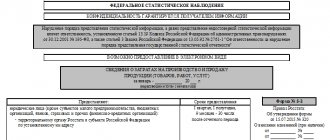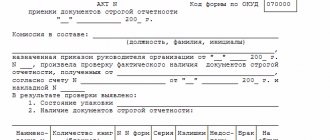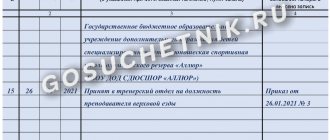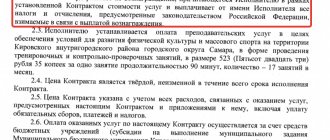The concept of the beneficial owner of a company
The beneficiary is represented by an individual or company that participates in the operation of the enterprise. The share of participation exceeds 25%, so all actions performed by the organization are fully controlled.
The following persons are the beneficiaries:
- landlords who rent out their properties to company owners;
owners of bank accounts;- clients of trust companies who gave away their real estate or other valuables on the basis of trust management;
- owners of letters of credit presented in paper form;
- insurance companies that receive money when insured events occur;
- holders of securities represented by bonds, shares or bills;
- actual owners of organizations.
Attention! Companies often hide information about beneficiaries to improve job security, as well as to prevent claims from government authorities.
All of the above persons benefit from a previously signed agreement. An example is a bank that receives money from the mortgage if the apartment burns down, so the insurance company pays the money to the lender. Even the heir who is named in the will as the recipient of property or control of the property can become a beneficiary.
Participation of the beneficiary (beneficiary) in insurance and inheritance
The beneficiary (beneficiary) in insurance is the persons who receive insurance payments upon the occurrence of an insured event (under previously concluded insurance contracts).
In this case, the beneficiary not necessarily the person or owner of the property insured in accordance with these contracts.
For example, when receiving a mortgage loan, the property that becomes the property of the borrower is insured, and the beneficiary in the event of damage or destruction of the property that is the subject of the pledge will be the lender . At least until the borrower fulfills the terms of the loan agreement.
The beneficiary of insurance payments can be determined by the insured person himself. For example, in life insurance, the beneficiary of the insurance may be the spouse of the insured person.
In inheritance cases, the beneficiary may change depending on the will of the testator or due to the death of the persons specified in the will. Thus, property can be bequeathed to a relative, to whom the testator entrusts guardianship of minor children.
Or the will indicates the brother of the deceased, but if he dies before receiving the inheritance, the brother’s heirs (heirs by right of representation) will actually receive the property.
Thus, when distributing the inheritance, the beneficiaries will be the persons specified in the will and persons entitled to inheritance by law.
Rights and responsibilities
Beneficiaries receive certain rights only upon formalization of contractual relations with a company. These rights include:
- the ability to dispose of your share in the company, so it can be donated or sold;
- control over the obligations of the enterprise owner;
- taking part in the process of appointing or removing a director;
- participation in meetings of founders;
- receiving income from the profitable activities of the enterprise.
Attention! The exact list of rights depends on the field of activity in which the beneficiary operates.
The rights of beneficial owners are often violated because agreements are not respected or the ability to control the organization is reduced. Sometimes they face limited access to information about the actual state of the company and do not receive the required income. To prevent such situations, relationships are formalized in writing.
Beneficiaries can protect their assets with a trust agreement. But if this agreement is violated, the owners themselves bear responsibility, so they pay fines or lose control. Responsibilities include the need to transmit information to government agencies, banks or other financial organizations. If the beneficiary wants to hide his situation, then if a violation is discovered, he will have to pay a large fine of 500 thousand rubles.
Form and procedure for filling out the certificate
There is no unified document: information about the owners of the counterparty, including the final beneficiaries, is submitted in the form recommended by the customer in the procurement documentation. The procedure for filling it out is also given there.
Such information is provided in the form of a table in which all owners are listed. The chain is revealed as follows: supplier - its owners - their owners - beneficiaries (individuals).
IMPORTANT!
The supplier is obliged to provide complete information about the beneficiaries. Full name, citizenship, place of residence, passport - these are the mandatory data on individuals.
Mandatory information about legal entities - TIN, OGRN, company address and place of residence of the owner, shares of participants.
According to the rules, a chain of owners is not drawn up for individual entrepreneurs. The individual entrepreneur has no other beneficiaries other than the entrepreneur himself. If an individual entrepreneur is required to provide such information, he must write a response letter stating that he is the sole owner and profit recipient of his own business.
Large companies, in response to the requirement for a CA, present to the customer a complete chain of business owners in the form and order established by the customer. The general rules for creating a chain are as follows:
- First of all, the owners of the first level are indicated, then the second level and then to the final beneficiary. Such beneficiaries are not only individuals, but also non-profit organizations, state and municipal entities, and constituent entities of the Russian Federation.
- For each participant, supporting documents and their details are indicated - name, number, date. When using online documents, links to resources for their placement are attached.
- For each participant, his main OKVED is noted.
- Personal information about beneficiaries from among individuals is entered only after the written consent of the citizen to the processing of personal data.
- All supporting documents are scanned and attached to the CA table.
Supporting documentation includes an extract from the Unified State Register of Legal Entities, an extract from the register of shareholders or the trade register, documents on the formation of a legal entity (including a foreign one) or a certificate of establishment of an organization, copies of passports of individuals, etc.
Legislative regulation
The concept of “beneficiary” is given in the provisions of Federal Law No. 115. This regulation regulates the area of combating various money laundering schemes. According to this law, the state forces companies to identify beneficiaries, so criteria for identifying them are given.
Based on amendments to Federal Law No. 215, the rules for the disclosure of information by companies are described, and this data is updated annually. By publishing this information, the transparency of the work of organizations and the legalization of income of individuals or legal entities is guaranteed.
Relations with beneficiaries are regulated using Central Bank Regulations No. 499. Additional information can be obtained from letters from the Central Bank, where explanations are given or complex cases are dealt with.
For whom and why is information about beneficial owners needed?
First of all, law enforcement and inspection authorities need this information.
The authenticity and relevance of the transmitted information helps to uncover and counteract many frauds and criminal schemes, such as:
- illegal withdrawals of money abroad;
- money laundering;
- tax fraud and concealment;
- sponsoring terrorism and other crimes.
Potential creditors of the company also require this information in order to objectively and reasonably approach the issue of providing financing, assess the reputation and possible consequences.
When is the concept used?
Typically, representatives of government inspection bodies show interest in beneficiaries, since these persons can manage companies. Therefore, this concept is used and taken into account to solve several problems:
- legalization of income and disclosure of schemes for obtaining money through criminal means;
- identifying cases of financing of terrorists or criminal organizations;
- disclosure of financial fraud;
- preventing the withdrawal of money to other countries through illegal methods.
Banks and other financial organizations that lend money are interested in information about beneficiaries to assess the possibility of providing a large loan. Based on the personalities of the owners, the risks of providing a loan and the reputation of the organization are established. Banks are required to transfer data on beneficiaries to Rosfinmonitoring. If a credit institution hides information, this leads to the payment of a fine of up to 500 thousand rubles.
Attention! If the beneficiary is the owner of the organization, then he transfers data about himself independently based on requests from regulatory authorities or when concluding contracts with state enterprises.
Rights, features, responsibilities
A beneficial owner is essentially the official legal founder or shareholder of a legal entity. But owners do not always adhere to the principle of transparency, and a nominal owner appears in the company’s title documents.
The beneficiary, who officially has a share in the company, has the right to occupy any position in it, including the general director.
A different situation arises if the beneficial owner is not legally registered and his identity is not disclosed. In such cases, various schemes are used to manage and control the company by the actual owner.
For example, the owner can receive the rights to manage a company through a general power of attorney from its nominee director, as well as access to its accounts, or have ownership of the company transferred in bearer shares.
The beneficial owner has the right:
- manage your own share;
- control the activities of the company's management;
- attend meetings and make decisions in proportion to their own share;
- have profit from the company's activities;
- provide management of shares to a trust fund.
To whom is information about beneficiaries provided?
Information about these persons is required to prevent financial violations. They are usually requested by the following persons and institutions:
- banks issuing loans;
- securities market participants;
- Insurance companies;
- pawnshops, if the company plans to rent out its property to receive a large sum;
- leasing companies;
- state or municipal structures;
- tax office;
- other authorized authorities;
- commercial enterprises with which it is planned to sign an agreement.
If a company refuses to transfer data for various reasons, it pays a fine. Information is required when concluding contracts related to public procurement. Based on the request, the company prepares a document that lists all owners and other persons who are not founders, but represented by beneficiaries.
Who is the ultimate beneficiary - definition
Definition of the term - ultimate beneficiary
The chain of beneficiaries always ends with a specific person receiving a certain profit. It is this person who is the final beneficiary.
Thus, the ultimate beneficiary is the individual who benefits from the activities of the company or the management of property.
How to get data
Information about beneficiaries based on Art. 3 Federal Law No. 115 must be included in mandatory documents transferred to government representatives or counterparties before carrying out any transaction with money or property.
There is no precise scheme for determining the beneficiary in the law, so you have to use the methodology given in Art. 105.2 NK.
Sample
Up-to-date information about the owners and shareholders of the organization - use this template in your work.
| Form for disclosure of information regarding the entire chain of owners, including beneficiaries (including ultimate) Organizational and legal form (in full) “Name of counterparty” Filling date day / month / year No. | Name of the counterparty (TIN, type of activity) | Information regarding the entire chain of owners, including beneficiaries (including final ones) | ||||||||||||
| TIN | OGRN | Short name | OKVED code | Last name, first name, patronymic of the manager | Series and number of the manager’s identity document | № | TIN (if available) | OGRN | Name / Full name | Registration address | Series and number of the identity document of an individual | Manager/participant/beneficiary | Information about supporting documents (name, numbers, etc.) | |
| 1 | 2 | 3 | 4 | 5 | 6 | 7 | 8 | 9 | 10 | 11 | 12 | 13 | 14 | 15 |
Signature of the authorized person
M.P.
And this is a sample certificate:
About the author of this article
Alexandra ZadorozhnevaAccountant, project expert Practicing accountant. I have been working since the beginning of my studies at the university. I have experience in both commerce and budgeting. From 2006 to 2012 she worked as an accountant-cashier and personnel officer. From 2012 to the present - chief accountant in a budgetary institution. In addition to direct accounting, I am involved in purchasing and economic planning activities. I have been writing feature articles for specialized publications for 4 years.
Other publications by the author
- 2022.02.28 Procurement control The Ministry of Finance clarified whether to simultaneously provide benefits to organizations of people with disabilities and penal institutions
- 2022.02.28 Procurement controlInstructions for drawing up a report on purchases from SMP and SONO according to 44-FZ
- 2022.02.25 Procurement control How the Treasury authorizes transactions with funds of treasury support participants from 2022
- 2022.02.25 Customer documents Plan to change the rules for drawing up FCD plans in institutions
Responsibility for concealing information
If the company does not transfer data about beneficiaries to government agencies, this leads to a fine of 100 to 500 thousand rubles. Officials pay a sanction in the amount of 30 to 40 thousand rubles. according to Art. 14.25.1 Code of Administrative Offences.
Attention! A similar penalty applies if a firm fails to establish and update beneficial ownership information.
A company can avoid serious punishment only if there is evidence that various measures have been taken to identify all the owners of the company. For this purpose, requests are prepared to participants or other persons.
Watch a comprehensive video on the topic:
Terms, definitions, documents
Beneficiary (from the French benefice “profit, benefit”) is an individual or legal entity to whom a cash payment is intended;
money recipient. Article navigation
- What is a “beneficiary” from a linguistic and legal point of view?
- Who are the beneficiaries under the law?
- What is the difference between a beneficiary and a beneficiary?
- How to find out beneficiaries
- Ultimate beneficiary
- Why is this so important
- Who has the right to request information about beneficiaries
- Who are the beneficiaries of a legal entity
- Principal and beneficiary
- Rights and obligations of the guarantor, principal and beneficiary
- What is a “beneficiary bank”
- Accounting information about the beneficial owner
- Information about the chain of ownership, including beneficiaries
- Beneficial Owner Questionnaire
- Is the beneficial owner the founder or not?
Each accountant who made a payment abroad filled out the details of the beneficiary’s bank. This word is sometimes used in everyday life, when they want to name someone on whom a certain event will affect the most favorably. From this article you can learn the different meanings of the term “beneficiary” in relation to business.
Differences from beneficiary
In many countries, beneficiaries are represented as beneficiaries, so these concepts are considered identical. But in the Russian Federation, these terms have some differences, with the beneficiary being considered a narrower definition. He owns more than 25% of the organization's capital and also gains access to its management.
The beneficiary only receives the benefit upon the occurrence of an event. For example, these include banks that receive money from the insurance company under the policy when an insured event occurs. Such organizations cannot manage the borrower or control its activities, and are not owners of capital.
Beneficial owner of a legal entity - rights and features
The beneficial owner of a legal entity is one or more actual owners of the organization who have the right or opportunity to directly or indirectly influence the activities of the company.
At the same time, the personal data of such persons may not be indicated in the registration and statutory documents of the organization, or their official participation in the company may be significantly downplayed.
The identity of such owners is usually known only to bank employees and commercial agents .
The beneficiary of a legal entity can take part in a meeting of shareholders and other owners of the company, in the reorganization of a legal entity, his voice is dominant in deciding issues related to the distribution of profits, and the organization’s participation in investment projects.
Non-disclosure of information about actual owners is often used:
- when conducting activities using offshore zones;
- when optimizing the taxation of organizations;
- when legalizing financial resources received in violation of legal requirements.
To ensure the participation of the actual owner in the activities of the organization without disclosing information about his identity, various schemes for registering property and title documentation are used.
Basic schemes for registering the property of beneficiaries (beneficiaries). When constructing complex schemes for registering property and settlements, it is important to correctly and clearly understand and use the tax laws of the jurisdictions used. Only with proper construction and structure of the organization, they will truly turn out to be anonymous, tax-free or low-tax, protected from unfair actions of third parties
For example, a beneficiary gains access to company accounts on the basis of a power of attorney issued in his name by a nominee director. Ownership of property is carried out through the ownership of bearer shares or through the involvement of persons acting as nominee shareholders.
Or the beneficiary enters into an agreement with the trust fund for the management of the company’s shares, access to the organization’s accounts and the ability to manage them, the beneficiary receives through a trustee.
Sample filling
When drawing up a document containing a list of beneficiaries of the company, the following information must be indicated:
- Business name;
- number of founders;
- details of constituent documents;
- a complete list of beneficial owners, indicating their full name, date of birth, passport details and TIN;
- if the beneficiary is a company, then its name, date of registration, legal address and other similar information are provided.
Attention! If information is requested by banks, they often submit their own forms, which only contain reliable information.
Companies are required to transfer data to the territorial offices of the Federal Tax Service and Rosfinmonitoring upon request. The procedure and deadlines for transferring documentation are given in PP No. 913. There is no official form for filling it out, but you can study examples on the Internet. If necessary, a representative of the enterprise can seek help from an employee of the Federal Tax Service or another institution.
There are organizations that do not have beneficiaries. These include firms that do not receive income from operations. Trading enterprises have income, so there are entities that receive high profits, but it is difficult to identify beneficiaries. This allows firms to hide the real beneficiaries. Therefore, government officials have to use tricks and unusual criteria to identify these individuals.
Beneficiaries are the recipients of the company's profits, and they are also involved in its management and control. They own a minimum of 25% of the company's capital. Information about these persons must be transferred to government authorities upon first request. A free form is used to compile the document.
Top
Write your question in the form below
How to write a letter about beneficial owners: sample certificate
Neither the Federal Tax Service nor Rosfinmonitoring have proposed any form of at least a recommendation for the list of beneficial owners, and therefore it can be compiled at your own discretion. Basic condition: the list must contain the information listed in paragraph. 2 subp. 1 clause 1 art. 7 of Law No. 115, namely:
- full name of the person;
- date of birth and citizenship;
- details of a passport of a citizen of the Russian Federation or a document granting the right of residence in the Russian Federation for a foreign citizen or stateless person;
- TIN.
In practice, organizations process the list of affiliates for the purpose in question.
Banks usually offer their own form of certificate, where they can indicate a slightly expanded or, conversely, narrowed (in the case where simplified client identification is permissible in accordance with subclause 1.11, clause 1, article 7 of Law No. 115) list of information. The form of information about beneficiaries for bidding within the framework of the Law “On the Procurement of Goods, Works, Services by Certain Types of Legal Entities” dated July 18, 2011 No. 223-FZ is offered by the customer along with all tender documentation and is usually dictated by the procurement regulations of the relevant customer.
A sample letter about beneficial owners can be downloaded here:
Beneficiary rights
As G. Avanesova notes:
“The rights of the beneficiary to receive a sum of money under a bank guarantee may be at risk in accordance with Art. 174 of the Civil Code * (384), which states that if the powers of a body of a legal entity to complete a transaction are limited by its constituent documents in comparison with how they are defined in the power of attorney, in the law, or as they can be considered obvious from the situation in which the transaction is made , and when it was completed, such a body of the legal entity went beyond these restrictions, the transaction may be declared invalid by the court at the request of the person in whose interests the restrictions were established, if it is proven that the other party to the transaction knew or should have known about the specified restrictions. In addition, it should be borne in mind that, according to Article 173 of the Civil Code of the Russian Federation, a transaction made by a legal entity in conflict with the goals of its activities, specifically limited in its constituent documents, or by a legal entity that does not have a license to engage in the relevant activity, may be declared invalid by the court at the claim of this legal entity, its founder (participant) or a government body exercising control or supervision over the activities of the legal entity, if it is proven that the other party to the transaction knew or should have known about its illegality.”
With the adoption of the Federal Law “On State Registration of Legal Entities” and in connection with the introduction of amendments to the Federal Law “On Banks and Banking Activities” on August 7, 2001, the problem of ascertaining the legal capacity of the guarantor is less complicated.
And yet there remains a need to study the legal capacity of the guarantor. As G. Avanesova correctly notes, the beneficiary’s verification of the guarantor’s documents, which confirm the legality of its creation, special legal capacity, powers and legality of the bodies that act on its behalf, should not seem to him a waste of time, since the information that is contained or missing in the constituent documents documents will help to correctly resolve the issue of accepting a guarantee and fulfilling the main obligation.
Beneficiary and final beneficiary: what is the difference?
It is necessary to distinguish between the concepts of beneficiary and ultimate beneficiary. If in the first case we can talk about both an individual and a legal entity that directly benefits from the use of property, then the final beneficiary is always an individual who actually owns the property, regardless of how long the chain from him to the company in which it is formed income.
Such a chain, by the way, can consist of dozens of links-legal entities, each of which is the formal founder of the next. The ultimate beneficiary is the person who actually receives income from the activities of the firm or the use of the property.







